Photographs: Laurence Griffiths/Reuters Vaihayasi Pande Daniel
'Will the Crimean peninsula's flavour change again as even more Russians come stomping through?'
'Will the Russian bear be content with lunching on Crimea?'
'Or will he eventually bumble into Kiev's Independence Square to squat for good?'
Rediff.com's Vaihayasi Pande Daniel looks back on a trip to Crimea, the setting for Tennyson's famous poem, Charge of the Light Brigade.
Suddenly I have too many summers stolen out of time. Or robbed out of history.
Travel writer Pico Iyer made famous the sensation of visiting eccentric places where you felt like you were falling off the map.
I have come across a new phenomenon to add to his uncannily insightful dictionary of travel: The feeling of having strayed into a tome of history.
It happens when you visit countries minutes before history remade them. Places you can no longer go back to, well, because, most likely they no longer exist in the avatar you saw them in.
A trip, a few years ago, to a peaceful, charming Syria, which was timidly opening up to the world, allowed us to visit the delightful old city of Aleppo with its souks and monuments and Damascus's impressive Umayyad mosque.
It is with horror and bemusement that I look at photographs of these sights today.
They are now silent, sun-baked piles of rubble, when once they were breathing places, where folks lived, laughed and loved -- the backdrop to special moments in people's lives, as they were to mine, momentarily.
Places too, I think, have a life of their own. Their destruction is sad to contemplate.
Cut to Ukraine some years later. I remember another memorable stay in a beautiful country.
Please ...
Will I ever be able to go back to Crimea?
Image: The Cave Monastery towers over Kiev. Its golden domes have towered over the Ukranian capital for a millennium.Photographs: Gleb Garanich/Reuters Vaihayasi Pande Daniel
After a slightly off-putting arrival at a very stiff Soviet-style airport in Kiev, overflowing with uniformed soldiers, we discovered that Kiev -- with its shimmering gold-topped Ukrainian Orthodox churches, its lavishly-designed buildings (a mix of Ukrainian baroque, art nouveau, neo-gothic, imperial Russian), wide boulevards, lively squares, art-deco subway stations -- is a stunningly attractive city.
A city with a global flavour not dissimilar to New York or Paris or Buenos Aires, Kiev has hopping-bopping pubs/clubs, live music, interesting restaurants serving up international food, as well as Ukrainian favourites like varenyky, borsch, blyntsi or zavyvantsi.
Like so many former Communist cities, Kiev had a beauty that had been bottled up like a scent for the past 60 years and now that the city has been allowed to breathe again, it was glowing, but not in a too commercialised or over touristy manner.
Much of Kiev was designed in the late 19th and early 20th century, although it had to be rebuilt drastically post World War II after the Nazi razed much of it -- and its architecture is rich and elegant, like parts of New York or London, and also fanciful.
It was probably possible to find every species of embellishments from an architect's glossary: Spires, towers, crepidomas, chimeras, triglyphs... in a city where legions of architects have dabbled with style.
Please ...
Will I ever be able to go back to Crimea?
Image: A woman eats ice-cream in downtown Lviv in western Ukraine.Photographs: Gleb Garanich/Reuters Vaihayasi Pande Daniel
Ukraine -- especially its central and eastern regions -- was very Russian in spite of being independent since 1991.
Since it is difficult to recognise one foreign language from another I believed people were speaking Ukrainian until sometime after arrival I was told everyone was speaking Russian.
Even folks with pure Ukrainian backgrounds -- the country is ethnically 77.8 per cent Ukrainian -- preferred Russian.
Ukrainian and Russian ancestries it seemed -- then -- co-existed peacefully/easily unlike other former Soviet states like say the Baltic countries.
That is not altogether surprising given that Ukraine was a founding state of the Soviet Union.
Please ...
Will I ever be able to go back to Crimea?
Image: Gimpses of Kiev's Independence Square in happier times.Photographs: Nadisha Daniel/Rediff.com Vaihayasi Pande Daniel
"You must be upset that Osama bin Laden has just been killed?"
"Is your father a king?"
Unlike western Europe, east Europeans, Ukrainians are not uncurious. They realise you are eastern, but are not certain of the geography and always have a few questions ready.
And given our part Estonian heritage (I am half Estonian and my daughters, then 16 and 11, are quarter Estii) we do not look that different from some of them!
Further curiosities bewilderingly manifested themselves when you are traveling with an attractive 16 year old. I had young men guiding us to railway stations, bus stations, restaurants and hotels.
One young man, after directing us to a restaurant in the southern town of Simferopol, also offered to have breakfast with us.
Another young man -- when we were lost on our way back from Bakhchysaray -- took us to our hotel and adamantly refused to allow me to pay taxi fare.
Warmth was a general trend wherever we went (barring some fearful border officials).
Please ...
Will I ever be able to go back to Crimea?
Image: A boy skateboards in the central Kiev city square.Photographs: Anatolii Stepanov/Reuters Vaihayasi Pande Daniel
I stood at the now famous Independence Square in Kiev with my two daughters.
It was a place where Kiev-ites hung out on a lazy weekend, when the weather was good, munching on fast food, romancing their girlfriends/boyfriends or showing their kids the cartoon characters roaming the square.
Folks lolled around the fountains and over flowed from the benches. Music played. Buskers did riffs or tricks to earn a few kopeks.
Opposite the square, a short walk away, were the St Michael monastery and the St Sophia cathedral.
St Michael's is a beautiful bird's egg blue with sparkling golden domes and a bell tower you pass through to enter this little domain of peace.
For a few hundred dollars you can take home a brass orthodox cross or a few shiny onion domes for your drawing room.
Please ...
Will I ever be able to go back to Crimea?
Image: The St Michael Golden Cupolas Cathedral in Kiev. The cathedral, errected in the 12th century, was destroyed by the Soviet authorities in 1935-1936 and fully re-built in 1997-1998.Photographs: Getty Images Vaihayasi Pande Daniel
The green and white St Sophia has one of Europe's rare carillons -- a percussion instrument of 23 church bells that are played serially to emit an interesting, melodious sound -- in its central courtyard.
Ukrainian Orthodox Church services are closer to temple aartis than the austere masses of the standard Roman Catholic and Protestant Christian churches.
Continuous medieval-rooted singing masses occur amidst clouds of incense, ringing of bells and flowers.
There are no pews and with a certain Eastern chalta hai, worshippers, with covered heads, came and go in streams.
Priests decked out in rich, ornate robes bring pomp to the proceedings. The churches, with their floor-to-ceiling oil painting panels and giant brass oil lamps, quite like diyas, were exotic, Oriental.
I was distressed to view through news agency photographs that the cheerful Independence Square was the site of a pitched battle between anti-government demonstrators and the riot police, where petrol bombs dropped like violent rain.
Please ...
Will I ever be able to go back to Crimea?
Image: A pair of boots placed as a memorial to an anti-Yanakovych protestor killed in clashes with riot police in Kiev.Photographs: J Mitchell/Getty Images Vaihayasi Pande Daniel
Recent pictures show a blackened square that seethed with hatred.
Small fires still burn along the periphery and the square had been trashed.
History came trampling through here before. The area was trashed once by the Soviets and the Saint Sophia cathedral was demolished in the 1930s. The cathedral was re-built in 1999 after Ukraine became independent.
That summer we flew to Crimea too, on a flashy pink coloured jet of a local regional airline. The little peninsula jutting into the Black Sea overflows with history and charm.
Not as European-looking as Kiev certainly, Crimea, ironically, had a stronger Russian hangover -- not that shocking considering that about 58 per cent of its population is ethnic Russian.
Crimea is said to be former Soviet leader Nikita Krushchev's 'gift' to Ukraine, when it was a republic of the Soviet Union.
Please ...
Will I ever be able to go back to Crimea?
Image: Left to right: British Prime Minister Winston Churchill, US President Franklin Delano Roosevelt and Soviet leader Josef Stalin at the Livadia Palace, Yalta, February 8, 1945. Below: The courtyard of the Livadia Palace.Photographs: Above: Herbert/Hulton Archive/Getty Images. Below: Nadisha Daniel Vaihayasi Pande Daniel
Sevastopol was an elegant town of columned Venetian-looking buildings, where weddings seemed to be taking place every ten minutes at every street corner.
In the neat white sprawling Livadia Palace (116 rooms), with manicured gardens overlooking the sea, in another corner of Crimea, one of the most important events of 20th century history took place.
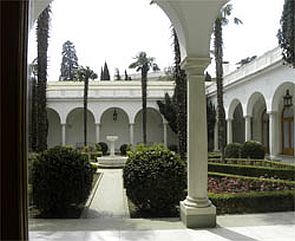 The neo-Renaissance style palace was the summer retreat of Russia's last czar, Nicholas II and in 1917, after his execution, the British ship, the HMS Marlborough, dropped anchor nearby and rescued the czar's mother and other Romanov relatives, and bore them to England.
The neo-Renaissance style palace was the summer retreat of Russia's last czar, Nicholas II and in 1917, after his execution, the British ship, the HMS Marlborough, dropped anchor nearby and rescued the czar's mother and other Romanov relatives, and bore them to England.
Twenty-eight years later, the Livadia palace played host to the Yalta Conference attended by the Big Three -- Winston Churchill, Franklin Delano Roosevelt and Josef Stalin -- who stayed there.
Now a museum, with yellowed newspaper cuttings and photographs on display, you can view the spot where decisions that redrew the map of Europe beyond recognition were taken over eight cold days in 1945.
Please ...
Will I ever be able to go back to Crimea?
Image: The Uspensky Cave Monastery.Photographs: Nadisha Daniel/Rediff.com Vaihayasi Pande Daniel
Crimea has been the stomping ground of a scrum of races -- the Bulgars, Greeks, Scythians, Cimmerians, Huns, Goths, Khazars, Slavs, Byzantine Greeks, Kipchaks, Ottoman Turks, Tatars, the Mongols.
Not surprising then that the place reflects a soup pot of cultures -- a neither-here-nor-there place that also reminds you of a dozen other places.
More recently it was the home of the Crimean Tatars, who were systematically and cruelly driven out of the peninsula by Stalin, which accounts for the higher population of Russians, many of them retired defence personnel.
At Bakhchysaray, once the capital of the Tatar Khanate, that takes a few tedious changes of buses to reach, one gets a strong whiff of Crimea's dual Tatar and Byzantine flavour.
The town consists of a maze of narrow lanes -- high walls enclose Ottoman-style mosques and tall red-roofed homes with accents of Muslim architecture.
Just outside the town, in complete contrast, is the ancient, some say 8th century, Uspensky Cave Monastery that is carved out of the mountain.
A long climb up brings you to a charming church located in a cave, where a picturesque but super solemn Ukrainian Orthodox singing mass is unfolding; one of those thrilling goose-bump travel moments that shall remain in the mind's eye.
Strangely, the design of the monastery is reminiscent of some Buddhist monasteries of Ladakh.
Please ...
Will I ever be able to go back to Crimea?
Image: The former Soviet underground submarine base at Balaklava outside the Ukrainian Black Sea port of Sevastopol. These days, it is a popular tourist destination.Photographs: Nadisha Daniel Vaihayasi Pande Daniel
More relevant to the grim events unfolding right this moment in Crimea, was a visit to Balaklava; another goosebump event, more like a shiver down your back moment.
Balaklava is a sweet but mildly boring fishing town of decaying buildings, seafood eateries and cheap trinket shops, with special historical significance, given that the battle of the Crimean War (between the Russians and the British, French and Ottomans) immortalised in Lord Tennyson's poem Charge of the Light Brigade happened close by in 1854 and the great nurse Florence Nightingale took care of the wounded from that battle, among others.
You might unknowingly give Balaklava a miss. That would be a mistake. An innocuous-looking little hill across the marina conceals an abandoned top-secret Soviet nuclear submarine station that was in operation till 1993, post the collapse of the Soviet Union, after which the Ukrainian government decommissioned it.
Deep in the bowels of this hill is subterranean base, built in this manner to make it indestructible. Journeying underground to see the station is pretty much like walking into a pre-Cold War spy film.
A labyrinth of underground tunnels, bathed in an eerie green light, leads you into the heart of the base and offers a chilling look at how it once operated, although the last submarine left the spot in 1996.
During Soviet times, this town was totally off limits to civilians and even the families of the personnel were apparently not aware of the base's existence nor could they visit this town.
Crimea, namely Sevastopol, was the location of Ukraine's naval base. More importantly it was the home of Russia's massive Black Sea Fleet.
The Russian navy had leased a spot here for its fleet till 2042, yes 2042. Not surprisingly the town was over run with naval officers.
Please ...
Will I ever be able to go back to Crimea?
Image: Orthodox monks besides a soldier in a Russian army vehicle in the Crimean town of Balaclava.Photographs: Baz Ratner/Reuters Vaihayasi Pande Daniel
It would seem Russian President Vladimir Putin's taking control of Crimea was a cinch, given the amount of forces Russia had in the area.
Crucial, as well, because the collapse of Ukrainian President Viktor Yanukovych's regime, and his escape to Russia, called into question Russia's presence in Crimea and required Putin to strike back quickly.
Strategic too, as Russia struggles to regain, in at least part, the enormous geographical influence it once had 30 years ago in Eurasia, and also not lose any areas, where its power could count, to the West.
Ukraine obviously has a critical role in Russia's agenda of pushing its geo-political influence, if not borders, furthest westwards that might shortly involve taking over the Russian-dominated eastern Ukraine as well.
How receptive are Russian-speaking and ethnic Russian Ukrainians, living in a country where Russian is no longer an official language, to Putin's machinations?
Ukraine has a strong Christian identity under the wealthy, politically powerful Ukrainian Orthodox Church.
During the long protest at the Kiev Meydan, priests were seen coming and going offering prayers, giving blessings and negotiating with the riot police. But apparently the Russian Orthodox Church also holds sway, confusing the issue some.
When you fly into Crimea you can't help but notice the scrawny Perekop isthmus that joins the peninsula with the rest of Ukraine.
Please ...
Will I ever be able to go back to Crimea?
Image: Sunset off the beach at Yalta in the Crimea, Ukraine.Photographs: Oleg Nikishin/Getty Images Vaihayasi Pande Daniel
Geographically, that has allowed Crimea to function as a self-governed autonomous region under the Ukrainian government.
But the isthmus has crucial importance in supplying the area with water, electricity, communication.
How will a Crimea, independent from the Ukraine, floating solitarily in the Black Sea survive, given that Russia is some ways away across the Black Sea (although there is a plan to join Kerch at the eastern tip of Crimea by a bridge to Russia), even if Ukraine is beholden to Russia for its supply of natural gas and military supplies?
How will Russianisation and de-Ukrainisation affect Crimea historically?
Will the little peninsula's flavour change again as even more Russians come stomping through?
Will the Tatar influences wane further since Russia will not encourage Tatar numbers in the Crimean peninsula to substantially increase?
Will towns like Bakhchysaray, that I had the privilege to see, become slowly extinct?
And -- a huge stretch here -- will bases like that eerie one in Balaklava come alive again?
Will the Russian bear be content with lunching on Crimea?
Or will he eventually bumble into Kiev's Independence Square to squat for good?
Most important to me: Will I ever be able to go back to an unchanged Crimea?

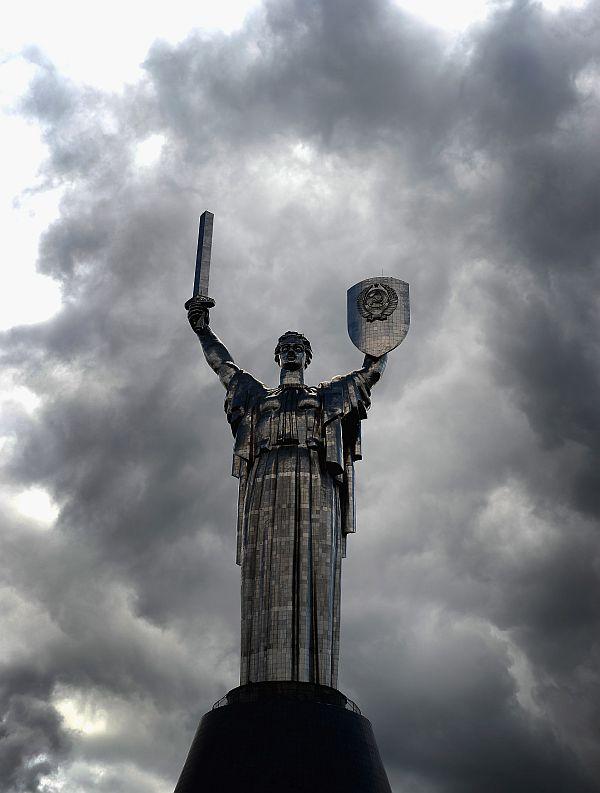
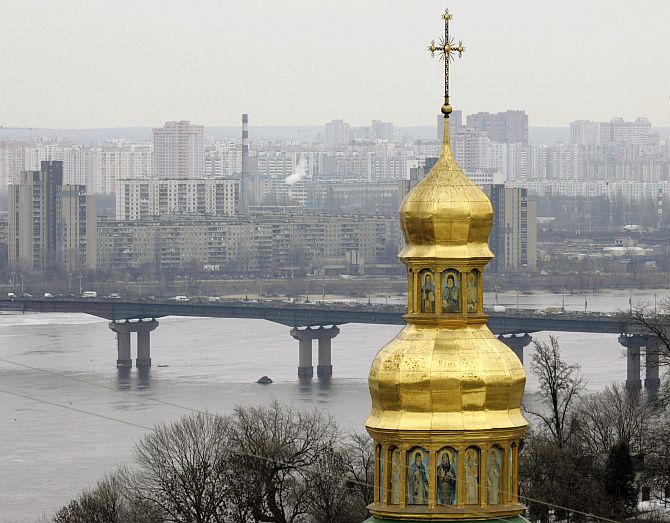

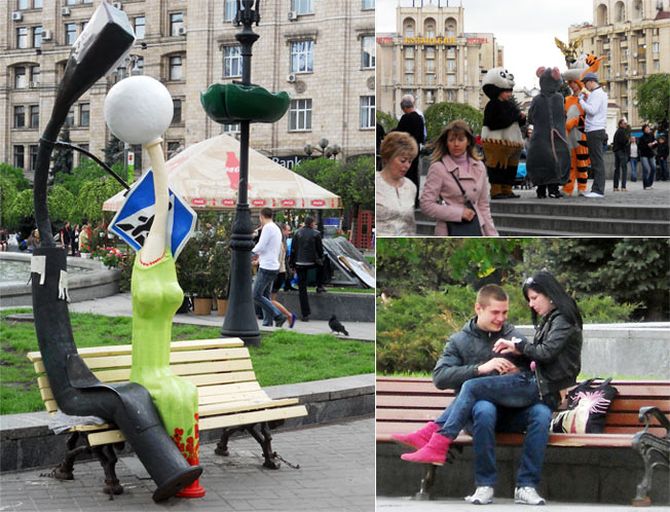

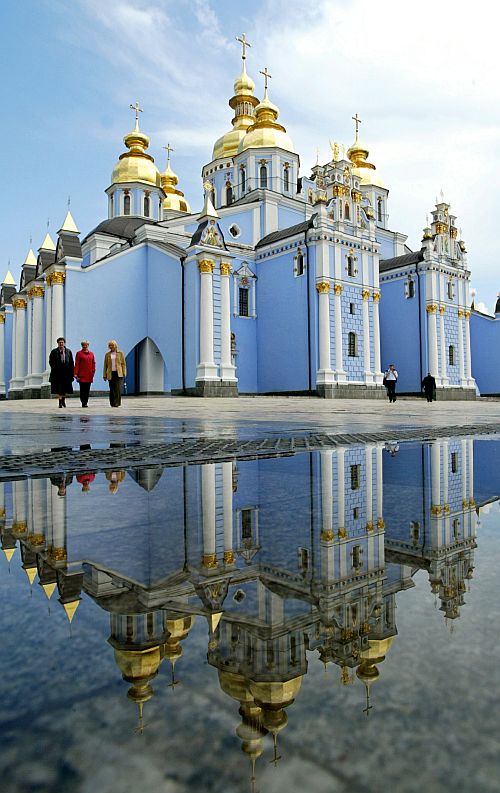

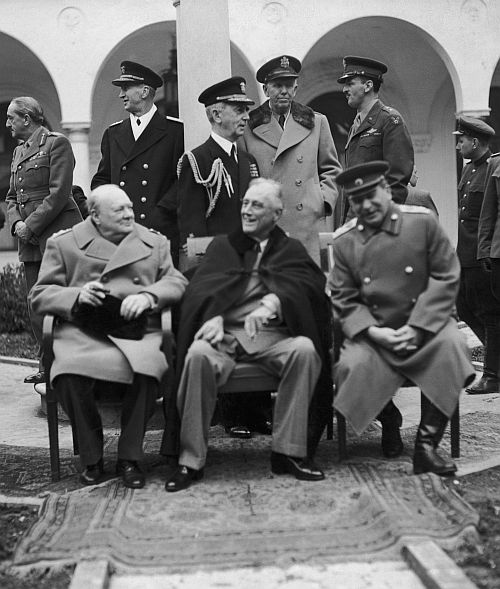
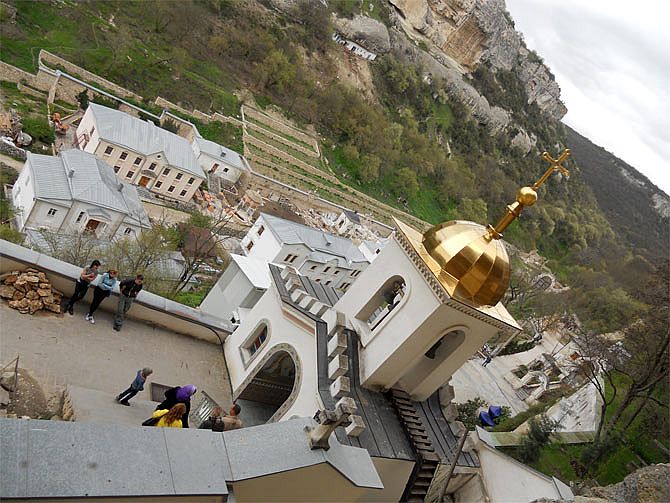
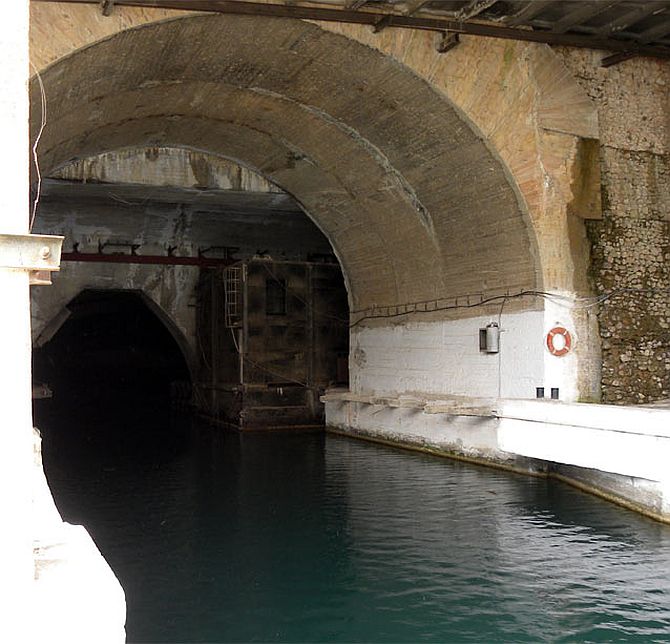
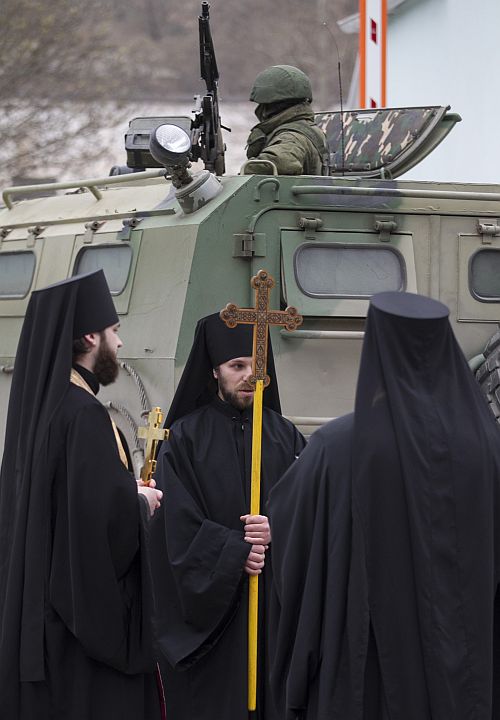
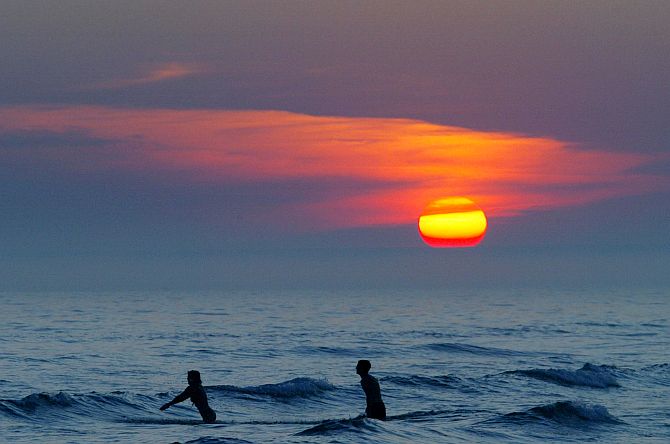
article